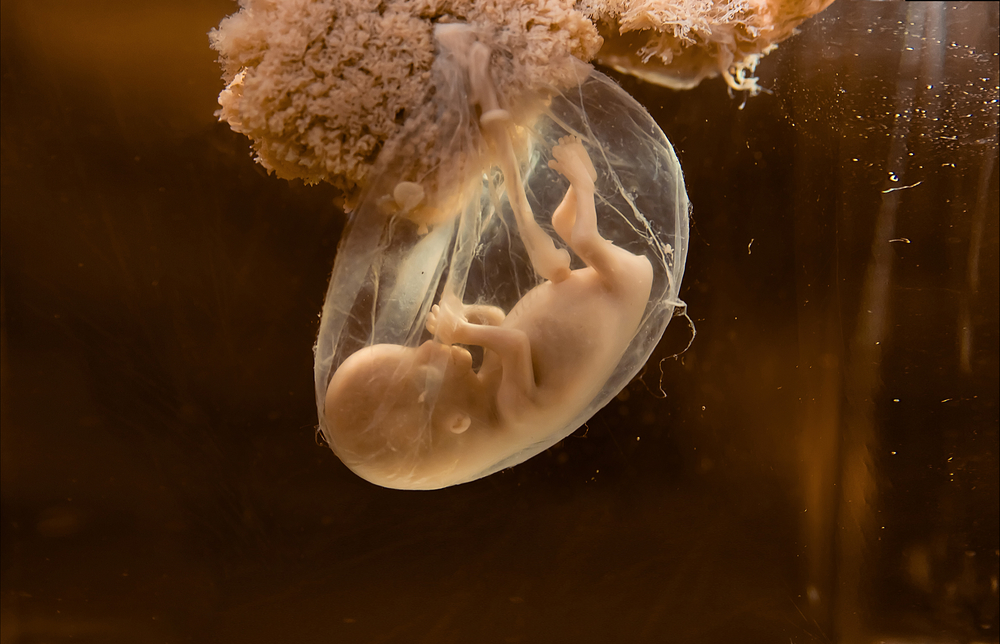A Cautious Go-Ahead for Human Gene Editing
3:47 minutes

Last week, the National Academy of Sciences and the National Academy of Medicine released a report on the possibility of using genetic editing techniques such as CRISPR on human embryos. The report isn’t just about academic explorations of gene editing in the laboratory. It suggests that there could be cases that would warrant using the technique to allow parents to protect an embryo from specific medical conditions. Up until now, the idea of genetically modifying humans has been totally off the table in the United States, although there have been reports of scientists gene-editing embryos in China. Jocelyn Kaiser, a staff writer at Science magazine, calls the report a “yellow light” for gene editing, and says that there are ethical arguments on both sides of the issue.
[Just how easy is it to edit DNA?]
Jocelyn Kaiser is a staff writer for Science Magazine in Washington, D.C..
IRA FLATOW: Now it’s time to play “good thing, bad thing,” because every story has a flip side. And last week, the US National Academy of Sciences and the National Academy of Medicine, two of the most respected research bodies in the world, released a report on the possibility of using genetic editing techniques such as CRISPR on human embryos– not just in the laboratory not just then, but suggesting there could be cases that would warrant using the technique, such as allowing parents to protect an embryo from specific medical conditions. And up until now, the idea of genetically modifying humans has been totally off the table in the US, though there have been reports of scientists gene editing embryos in China.
Joining me to talk about the good and bad of the reporter is Jocelyn Kaiser. She’s staff writer at Science Magazine. Welcome.
JOCELYN KAISER: Hi, Ira.
IRA FLATOW: So tell us exactly what this report says.
JOCELYN KAISER: OK. So what the report says is there are many reasons why we need to be very careful about what’s known as editing the human germline– that is, making changes to eggs or sperm or embryos that could be passed on to the next generation. There’s many reasons why we should be careful about doing this and be cautious about doing it. But there are a few rare instances where we may want to do it. And that is families that have a severe genetic disease that they are going to pass on to their child, but they can’t prevent it any other way. We might want to allow this to happen in those cases.
IRA FLATOW: So that’s the good news. So what’s the bad thing here?
JOCELYN KAISER: Yes. So the bad thing is that some people are worried that yeah, maybe it makes sense to do it in these very rare circumstances. But if we do let it happen, then it could sort of open the door to many other changes. Embryos that we would not maybe feel so comfortable with, like modifying an embryo to make it a better athlete, or make it smarter, or have blue eyes, or whatever. Many people are worried that that could happen once you open the door to editing a human embryo to prevent some serious disease.
IRA FLATOW: So they might open the door to editing maybe blue eyes or dark hair or something like that that’s really sort of cosmetic.
JOCELYN KAISER: Right. Well, not just cosmetic things. I mean, things like– there isn’t really a gene for intelligence, but if you could engineer that into an embryo, would we create some sort of super race of humans? And what about the people who didn’t have the ability to do this? Would they be left out?
IRA FLATOW: These type of edits on a developing embryo– could they potentially be passed down from generation to generation?
JOCELYN KAISER: That exactly. That’s the concern, Ira, that if you do something– if you change the DNA of an embryo versus an adult or a child, that change will be passed on to that embryo’s descendants. And that’s something you couldn’t stop once you’ve done it. It’s going to be passed on. And so that’s one reason why people are worried about doing this. Do you want to start tinkering with our genes in that way?
IRA FLATOW: Yeah. You know, the National Academies carry a lot of weight in what they say, but is this binding on anyone what they’re talking about, and the way to be careful about it?
JOCELYN KAISER: Yeah, it’s not binding. It’s really just advice, not only to the United States, but to other countries. And they can decide if they want to follow the advice. But as you said at the beginning, these are very respected bodies. And when they offer their advice on something, it will have a lot of influence.
IRA FLATOW: Jocelyn, thank you very much for taking the time to be with us today.
JOCELYN KAISER: You’re welcome.
IRA FLATOW: Jocelyn Kaiser, a staff writer at Science Magazine.
Copyright © 2017 Science Friday Initiative. All rights reserved. Science Friday transcripts are produced on a tight deadline by 3Play Media. Fidelity to the original aired/published audio or video file might vary, and text might be updated or amended in the future. For the authoritative record of ScienceFriday’s programming, please visit the original aired/published recording. For terms of use and more information, visit our policies pages at http://www.sciencefriday.com/about/policies/
As Science Friday’s director and senior producer, Charles Bergquist channels the chaos of a live production studio into something sounding like a radio program. Favorite topics include planetary sciences, chemistry, materials, and shiny things with blinking lights.